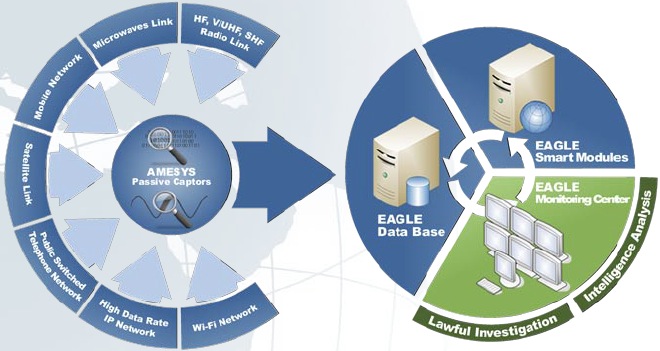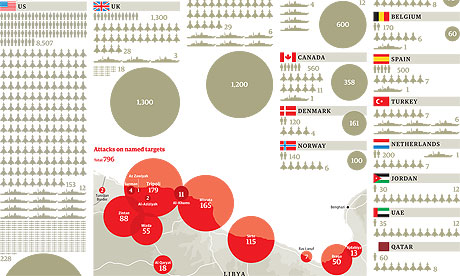OWNI.eu – By Jean Marc Manach
After repeated interrogations lead by Reflets.info, OWNI, the Wall Street Journal and the Figaro, Amesys, the French company that sold Internet surveillance systems to Gaddafi’s Libya tried to calm things down with a statement posted on its website (mirror):
The contract only concerned the sale of materials capable of analysing a fraction of existing internet connections, only a few thousand.
However, the documents in OWNI’s possession tell a different story, in fact, the exact opposite story. In contrast to traditional surveillance systems that target specific connections, the “massive” (sic) Amesys surveillance system is used to intercept and analyze the entirety of the telecommunications network, to the scale of an entire country.
In its presentations for the high-end surveillance service, Amesys flaunts EAGLE as having been conceived to monitor the whole spectrum of telecommunications: IP traffic (internet), mobile and landline telephone networks, WiFi, satellite, radio and micro waves thanks to its “passive waves, invisible and inaccessible to any intruder.”
The massive system (EAGLE GLINT, GLobal INTelligence, which was the system sold to Libya), was conceived to respond to interception and surveillance needs at a national level and to be capable of aggregating all kinds of information and analyzing, in real time, a national data flow, from a few terabytes to a few dozens petabytes [1peta-octet = 1024 tera-octets, 1 tera-octet = 1024 giga octets and that the total amount of everything ever written by the human race in all languages is estimated at 50 peta-octets…]


EAGLE is therefore able to aggregate, in an automatic fashion, email and physical addresses, telephone numbers, photos of suspects, but also to make automatic searches by date, hour, telephone number, email address, keyword, localization… [Read more…]



